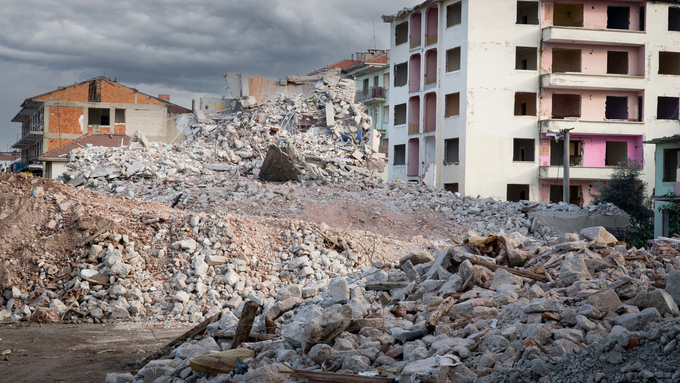
February 6 at 4:17 A.M., a major earthquake of 7.8 magnitude scale occurred near a Turkish town called Gaziantep in south-eastern Turkey. The earthquake took place near the border between Turkey and Syria, causing damage in ten southern Turkish provinces and four Syrian provinces, along the fault line of 100 km.
A week has passed since. The damaged site is still filled with remains of buildings and rescue workers. The rescue units have been working night and day to dig out the survivors and the dead bodies. The operation is particularly difficult as many buildings crashed down and most people are trapped under the debris because the earthquake hit around 4 A.M. when they were asleep inside. Many died immediately at the site. Still, he rescue workers are digging the rubbles around the cities to detect even the tiniest signs of people beneath them. The workers dug out the survivors from the rubbles, including little children and pregnant women. However, as much time has passed, it is more difficult to locate them. Although experts say that people can survive over a week or more under rubbles, the chance seems to decrease over time, especially in a cold weather. The death toll is a little over 41,000 now, however, it is presumed to go higher in few days.

The Turkish people are going through a spiral of grief and fury from the earthquake and their own government. The tremor made multi-storey buildings collapse into pieces in a flash, even the recently built apartment complexes that advertised using “high-quality concrete with steel bars” in construction. Witnessing the buildings turn into ashes, the Turkish people grew suspicious of the country’s construction standards. The latest building construction standards was set in 2018, including the contents about use of modern technology and materials to withstand the tremor of the earthquake. However, the construction companies hardly adhered to the building standards, making the buildings vulnerable to earthquakes. The Turkish government, in fact, has allowed “periodic construction amnesties” to the buildings that fell short of the safety standards required for construction approval, even when the scholars warned repetitively. The incumbent president Recep Tayyip Erdogan and his government provided amnesties to 7.4 million buildings that breached required construction standards and licensing, and this has regularized poor construction practices and illegal project modifications, which led to the weakening the cities’ earthquake resilience. The Turkish people were already dissatisfied with the government’s slow and disorganized management of the disaster, and the reports about the amnesties drive the people rage over the government.
The other side of the earthquake is Syria. The damage from the earthquake on the Syrian territory is no less than the damage the Turkish regions had. Rather, the people might suffer even more as the buildings have been already damaged and the administration does not function fully due to the 12-year-long ongoing civil war. The emergency aid was slowed down as the foreign aid truck’s access route to Syrian earthquake-affected regions were limited only to the crossing point at Bab al-Hawa. Moreover, the most hardly-hit region was denied of access as it was one of the last remaining regions under the rebel group’s control. However, the Syrian President Bashar al-Assad allowed to open two more crossing points at Bal Al-Salam and Al Ra’ee for humanitarian aid. Now that it has been some time later from the occurrence, the aid will be mainly concentrated on delivering life-saving supplies, including food, health, nutrition, protection, shelter and winter supplies” to the people, than the rescue mission.
vaney1998@gmail.com








